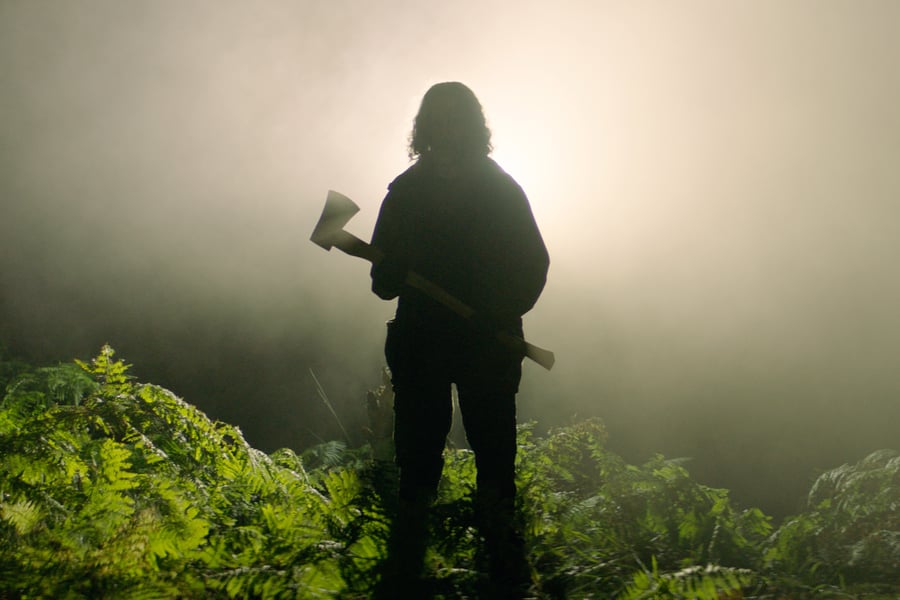Welcome back, Weird-as-fuck Ben Wheatley. We’ve missed you.
Since Down Terrace, the 2009 blend of Sopranos-style gangster saga and kitchen-sink drama that remains one of the strongest debut films in a decade, the British director has fashioned himself as a purveyor of oddball genre mash-ups, combining elements that go together like peanut butter and peyote. What if a hitman thriller took a detour into Wicker Man territory? (2011’s Kill List.) What if a daffy, misfits-in-love rom-com doubled as a portrait of serial killers? (2012’s Sightseers.) What if a tale of 17th century warfare and British derring-do was also a drug-trip flick? (2013’s A Field in England, as close as he’s come to fashioning a masterpiece.)
His interpretation of J.G. Ballard’s book High Rise in 2015 borrowed elements of science fiction, social satire and David Cronenberg’s own cinematic stab at the cult novelist’s work, Crash; after a go-for-broke action movie (Free Fire) and made-for-peanuts ensemble film (Happy New Year, Colin Burstead), Wheatley would pivot to helming a Netflix adaptation of Rebecca. Watch his tony, curiously tame take on Daphne du Maurier’s romance, and you can’t help but feel like you’re viewing a sizzle reel for nabbing other for-hire gigs, or a misguided attempt to prove he could churn out straight studio-to-streamer-sanctioned work. There are filmmakers who push to expand their skill sets and storytelling chops — the underrated Burstead, in fact, reminds you he doesn’t need genre tricks to get his sensibility across — and there are those who end up forgetting their singular strengths in search in something shiny and new. The fear was that Wheatley was nosediving into Rut No. 2.
In the Earth, the writer-director’s new horror film that opens in theaters today, more or less dispels that notion. “Return to form” is a loaded term, so let’s say that the British director is squarely back in his warped comfort zone. It starts with a slightly postapocalyptic tinge, as a lone traveler strolls down a deserted country road, thought a empty rural village and right into the HAZMAT-suited arms of a medical outpost team. His name is Martin (Joel Fry). A virus has crippled the globe, and this wandering scientist has come to find Dr. Wendell (In Fabric‘s Hayley Squires), a colleague who’s been studying “plant networks” in a nearby forest. She’s gone silent for the last few months, and Martin is keen to find out why. A park ranger, Alma (Ellora Torchia), will be his guide through this now-restricted area. The duo are warned to be careful. “People get a bit…funny in the woods sometimes,” they’re told.
Enter Zac (Reece Shearsmith). After coming across an abandoned tent and enduring an attack in the middle of the night — Wheatley films the assault as a series of skittering flashlights and blurry movements, a hint of what’s to come — Martin and Alma encounters this mysterious bearded man. A near-feral denizen of these woods, Zac takes them to his nearby makeshift home, stitches up one of Martin’s wounds, gives them shoes (theirs have been stolen) and shelter. He then offers them a sweet elderflower tea, at which point you’re reminded of numerous fairy tales in which strangers bearing gifts of food and beverages are not to be trusted. You may also recall an elaborate tapestry that Martin saw back at the research lab, centered around a spirit named Parnag Fegg that protects the forests and spooks the locals. That drawing will soon make a reappearance.
It may be a spoiler to say that the M.I.A. Dr. Wendell also eventually shows up, and rounds out In the Earth‘s central quartet of cracked seekers. It might be even more of a spoiler to note that Wheatley’s nightmarish fable will also feature axes, amputations, bows and arrows, creepy photographs, ancient rituals, a lighting scheme heavy on rotting greens and Bava-worthy reds, mythology, magick and madness. Strobes and and a droning, feedback heavy soundtrack become a key part of the movie’s second-half aesthetic, as does a Roeg’s gallery of quick-flash shots, ominous zooms and eerie, hallucinatory visuals. And though the narrative begins to fall apart at roughly the same rate as the characters’ psyches once the endgame makes itself apparent, you can feel Wheatley beautifully flexing his midnight-movie-throwback muscles. This is horror in the key of pandemic-psychedelic, a woozy trip into the mystic that plays like an evil twin to those “Nature Is Healing” memes. He is very much in his element here.
And the pandemic aspect of In the Earth, it should be noted, is key. Wheatley wrote this during the first few weeks of England’s Covid lockdown, and those early scenes of wary medical officials, endless have-you-recently-come-into-contact-with questions and tests, and an overall sense of fear feel extremely familiar. But more important than its sense of syncing with a contemporary moment is the sense that it’s also a reactive movie in regards to our global state of emergency. The natural world gives us the resources to live. It also gives us viruses. And while some characters seek to chart aspects of nature and others wish to pay loving tribute (and offer sacrifices) to it, the most resonant notion from Earth‘s characters is that nature is a living, breathing, and undeniably aggressive entity. How Wheatley translates this notion into a bounty of Pagan paranoia is what makes the film undeniably his. A dozen other ’70s filmmakers who worked on the cult-cinema freakout fringe could have made this movie then. Only Wheatley could make it now.
From Rolling Stone US






































